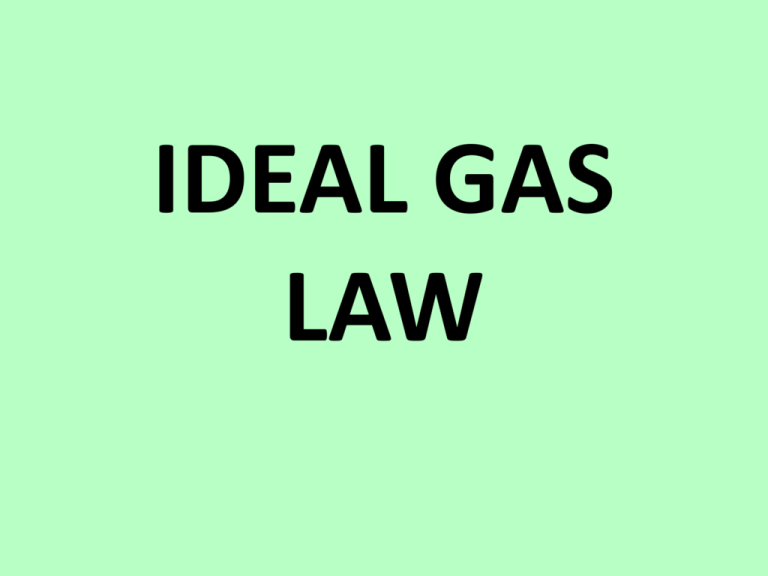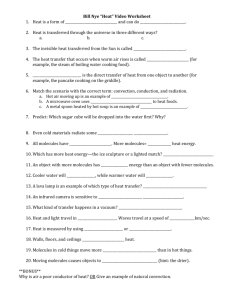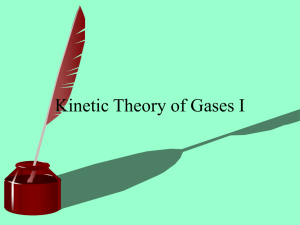ideal gas law - Ms. Mogck's Classroom
advertisement

IDEAL GAS LAW What’s the Diff?! • What is the difference between a real gas and an ideal gas?! Google it! Or read page 172 in your textbook! Ideal Gas • Molecules size is negligable • Gas molecules are in constant, random, stratight line motion because… • …no force exist between them • Gas molecules undergo perfectly elastic collisions, where no energy is lost, collisions happen quickly Real Gas • In high pressures molecules are forced together and so the size is greater than the space between the molecules • As temp decreases, molecules slow down and may eventually stick together and become liquid • Molecules aer more like soft spheres and can change shape durig a collision and rebound making this process a little slower • Boyle’s Law = volume of gas is inversely proportional to the pressure • Charles’ Law = the volume of a gas is directly proportional to the absolute temperature • Avogadro’s theory = the volume of a gas is directly proportional to the chemical amount of matter Ideal Gas Law PV = nRT • The ideal gas law is a combination of Charles’ Law, Boyles’ Law and Avogadro’s Hypothesis • Boyle’s Law = PV = a constant • Charles’ Law = P/T = a constant • Avogadro’s theory = V/n = a constant All together now • PV = R (universal gas constant) nT • R = 8.31 L kPa / mol K So… PV = nRT Example: • What is the volume of 3.35mol of neon at 42.5 degrees Celsius and 96.5kPa? • • • • • List your knowns T = 42.05C = 315.5K R = 8.31LkPa/molK n = 3.35mol P = 96.5kPa List your unknowns V = ???? PV = nRT • V = nRT / P (rearranged to solve for unknown) • V = 3.35mol x 8.31LkPa/molK x 315.5K 96.5kPa • V = 91.0L Example 2: • What is the volume of 66.4g of CO2(g) at 32.0C and 115kPa? • • • • • Knowns g = 66.4g T = 32.0C = 305K P = 115kPa R = 8.31LkPa/molK Unknowns n = mols????? V = ?????? Example 3 • What is the molar mass of 3.827g of gas at a temperature of 25C, 11.38L and 2.88atm?








